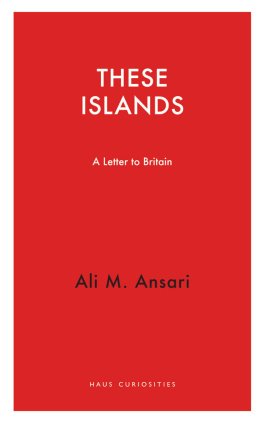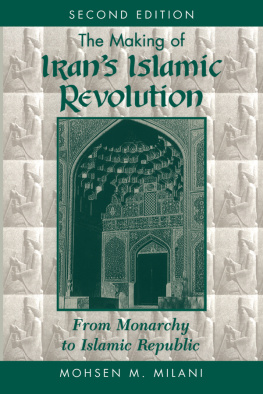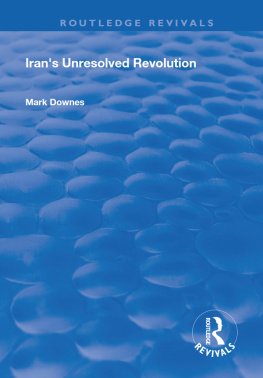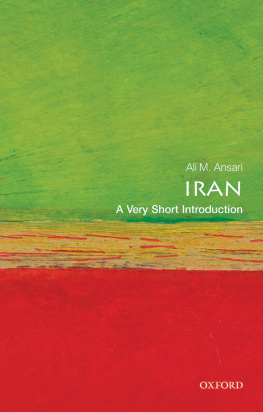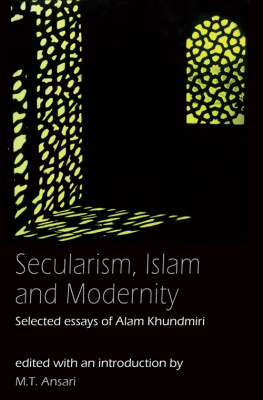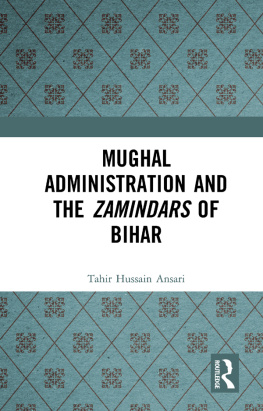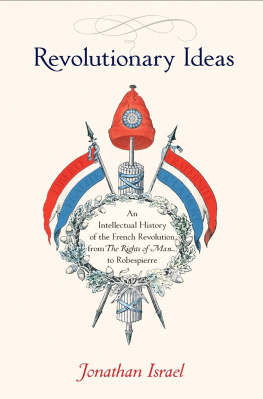First published in Great Britain in 2016 by
Gingko Library
70 Cadogan Place
London SW1X 9AH
Copyright 2016 individual chapters, the contributors
Introduction Copyright Ali M Ansari 2016
The rights of the contributors to be identified as the authors of this work has been
asserted in accordance with the Copyright, Designs and Patent Act 1988.
ISBN 978 1 909942 91 2
eISBN 978 1 1 909942 94 3
Typeset in Times by MacGuru Ltd
All rights reserved. Except for brief quotations in a review, no part of this book may be
reproduced in any form or by any electronic or mechanical means, including information
storage and retrieval systems, without written permission from the publisher.
A CIP catalogue record for this book is available from the British Library.
Printed and bound in Spain by Liberdplex.
www.gingkolibrary.com
Contents
Eli M Ansari
Ali Gheissari
Elahe Helbig
Kamran Matin
Milad Odabaei
Pejman Abdolmohammadi
Salour Evaz Malayeri
Urs Goesken
Evan Siegel
Roman Seidel
Siavush Randjbar-Daemi
Any views expressed are those of the authors of the chapters and do not necessarily represent those of the Gingko Library.
Introduction: Developing Iranian Intellectual History
Ali M Ansari
Perhaps the most influential writer on the Constitutional Revolution of Iran was the British Orientalist Edward G. Browne. His Persian Revolution, published in 1909 effectively established the narratives that would dominate the historiography of the constitutional movement and the revolution it generated, for decades to come.1 Browne effectively narrated it as an Iranian awakening drawing explicit comparisons with the Italian Risorgimento2 that had its roots in the Tobacco Boycott of 1891/2, and which, perhaps more interestingly, was emphatically influenced by the intellectual leadership of Jamal al Din Al Afghani, the political iconoclast whom Browne cast as a pan-Islamist. This was another characterisation that would help shape our understanding of both the constitutional movement to say nothing of Afghani himself.3 Brownes deep affection for the country ensured that when the time came he would seek to not only explain, but in many ways promote, the constitutional movement that had emerged. His engagement with Iranian activists assured him a steady supply of information and some critics, especially in the Foreign Office, wondered aloud whether Browne was associating with undesirable revolutions and, rather than objectively assessing the situation, was allowing his judgment of the events to be unduly swayed. His enthusiasm nonetheless won him many Iranian admirers (an admiration that has barely subsided to this day) and has probably encouraged a less critical reading of a narrative that is, at once, history and political advocacy.4
Moreover, as a liberal supporter of the constitutional movement, Brownes account has tended to confound the dominant narratives on imperialism and Orientalism (as redefined by Edward Said in 1978), such that some interpretations have gone further and read into Brownes text a reading that owes more to current social scientific models, and political leanings, rather than the context of Brownes own intellectual milieu. Some of these draw on Brownes text explicitly, others implicitly, to make points about the popularity, nationalist, democratic, and occasionally Islamic nature of the movement. To take the latter example, Brownes emphasis on Al Afghani as a pan-Islamist, suggests to some an acute awareness of the constitutional movement as fundamentally determined by a popular Islamic impulse. But Browne himself qualified what he understands by the term pan-Islamic, and makes quite clear at the outset that in seeking to rehabilitate the term and help situate Irans constitutional revolution within broader developments his domestic audience might better appreciate. At the same time he sought to reassure a readership that that tended to view any such transnational movements with fear and disdain. For Browne, pan-Islamic movements, should not necessarily be seen as any more, or less, fanatical to other movements, and can be a means by which national movements can be energised (a view that probably owed much to Afghani). But even this was influenced by his own appreciation of Islam, which drawn from his own particular intellectual heritage, was arguably more romanticised and indebted to the Enlightenment than many might acknowledge.5
It is this liberal Enlightenment context that has at times been both ignored and misunderstood. Browne, and those intellectuals Iranian and European with which he engaged, operated within an intellectual environment framed and informed by the ideas of Enlightenment. It is thus important to understand and contextualise their views within this frame of reference. This has of course subsequently led to problems of its own as critiques of the Enlightenment gathered pace after 1945, which tended to argue that all the ills of radical nationalism most obviously in its promotion of race theory and imperialism, could be traced to and laid at the door of the Enlightenment.6
In this re-reading of the narrative, the Enlightenment gave birth to notions of race, nationalism, and imperialism in Europe, which was soon transported and transplanted, often through the agency of a willing local elite to the non-European world, where these alien ideas obviously failed to take root, and led ultimately to further dislocation and the emergence of nativist movements, which were instinctively anti-nationalist and increasingly beholden to authentic cultural and ideological values often identified around religion. Edward Said was to epitomise this narrative in his eponymous critique of Orientalism, but it is also not difficult to see how Browne with his apparent sympathy for pan-Islamism, could be recruited to this narrative. It does not necessarily sit well with Brownes support for the constitutional movement no narrative, especially those driven by an explicitly ideological template is clean and tidy in its analytical categories but Brownes apparent support for the subaltern in the Iranian political awakening helps exonerate him from any responsibility in not seeing the flaws of a movement drawn from an inauthentic nationalist ideology, and which, despite its idealism, ultimately resulted in the restoration of autocracy, under the Pahlavis.
At the same time, it is worth acknowledging that the Enlightenment was not a homogenous movement and that Browne engaged with particular narratives of the Enlightenment and, like other intellectuals, absorbed, adapted and reproduced these ideas according to his own needs, rationalisation and prejudices. Intellectual history, in short, is neither clean nor tidy, nor does it follow a disciplined template in which one idea clearly leads to another.7 It is our retrospective analytical conceit as well of course our need to provide didactic explanation that seeks to simplify complex processes into neat categories. Browne, for example, is clear in his Persian Revolution that ties of faith are a good deal more rational than ties of race.8 yet in an earlier exposition, his unfavourable comparison of the Turks against the Iranians could certainly be read as racist9 while his continued passion and enthusiasm for the Iranians could be viewed as holding them up as a people of innate superior intellect. To quote Browne: However grievous their fate and however cruel their destiny, [Iranians were] a chosen people, unique and apart from all other nations.10



